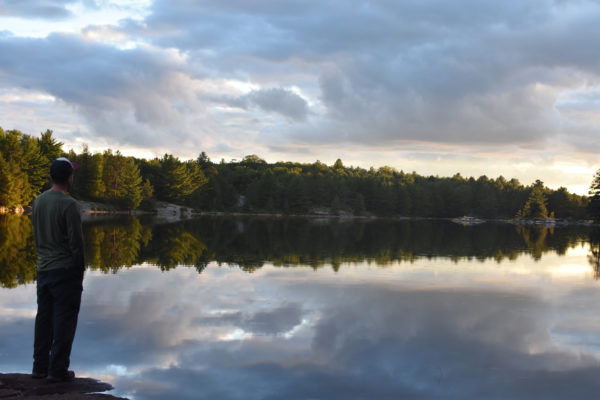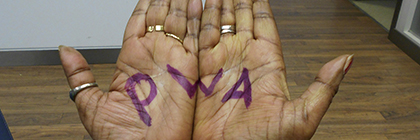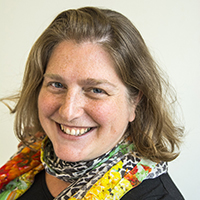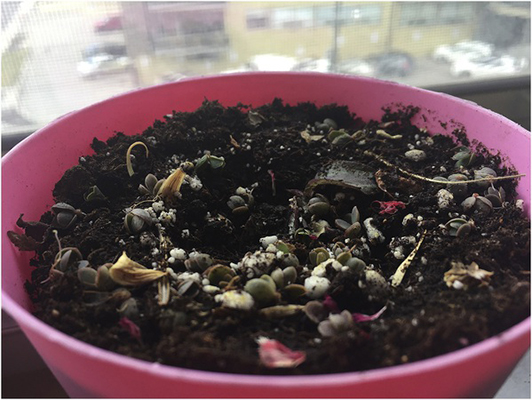
Students, staff and faculty had an opportunity to ask York University’s senior leadership team questions about the new term and their academic, research and professional work during the all-community Virtual Town Hall on Sept. 21.
The event featured President and Vice-Chancellor Rhonda L. Lenton, Provost and Vice-President Academic Lisa Philipps, Vice-President Research & Innovation Amir Asif, Vice-President Equity, People and Culture Sheila Cote-Meek, Vice-President Finance and Administration Carol McAulay, Vice-President Advancement Jeff O’Hagan and Vice-Provost Students Lucy Fromowitz, answering questions received through Zoom and by email.
Following a land acknowledgement, Lenton began her opening remarks by welcoming the participants to a new academic year and emphasizing that decision-making by University leadership throughout the pandemic has prioritized the safety and wellbeing of the York community. The president encouraged the use of COVID-19 tracking apps and discussed protective measures such as plexiglass barriers that have been installed to protect those accessing campuses. Lenton assured participants that the YU Better Together website, which includes a new COVID-19 case counter, has resources to keep the community fully informed about the ongoing pandemic response.
Lenton also discussed the recent disruption to the eClass platform and talked about how the UIT team will keep working to improve the performance and reliability of eClass and to prevent disruptions in the future. UIT responded quickly to the disruption and restored performance, such that the system is now working well. The president said that further funds are being invested to enhance York’s IT systems and expertise.
Regarding the University’s strategic priorities, Lenton provided an update on scenario planning around enrolment challenges and potential budget impacts, noting that the outlook has improved considerably since the spring and that York is on track to meet targets, an impressive accomplishment for the entire community.
The president also spoke to the new academic plan (UAP) for 2020 to 2025, outlining strategies to overcome the harmful legacy of systemic anti-Black racism in the context of a new Equity Plan for the University, conversations to inform an Anti-Black Racism Frameworkand the appointment of Professor Carl James as senior advisor, equity and representation, in the Division of Equity, People and Culture.
To close her remarks, Lenton discussed York’s new brand strategy, which aligns with the UAP, and centres on how York is committed to driving positive change in the world around us. Over the coming weeks and months, she said that community members can expect to see the brand come to life in many ways through training, updates on key institutional projects and a new communication campaign with vibrant new visuals and stories.
The interactive portion of the town hall began with a question from a student about which libraries and food facilities on campus will be open with social distancing protocols. McAulay answered by directing community members to the YU Better Together website, which she indicated has the most up to date information about specific buildings and services that are operating. Philipps added that library spaces are available for booking for those who require a quiet study space on campus, with more information available on the York University Libraries website.
In response to a number of questions about the opening of the archives and whether the libraries will allow students to take out and return books, Philipps elaborated that the libraries have done extensive work to expand the range of resources available electronically though agreements with publishers and a digitization service. She outlined a curbside pickup service for those who need to take out books that aren’t available digitally.
One participant asked a live question about plans for the winter term and whether most classes will be online or in person. Lenton responded to the question with assurances that, in order for everyone to know what to expect as soon as possible, a decision was made to continue with the same format and provisions as the fall term, with the majority of courses being offered online. For courses that require in-person instruction, Lenton discussed the agreement that information would be clearly marked on course outline so that students would know about their requirements and what safety precautions are being put in place. Philipps added that a survey of instructors is wrapping up so that this information will be available for students before they enrol in winter courses.
Participants asked many questions about international studies, including when international students can expect to be able to travel to Canada and experience in-person classes and when domestic students will know whether than they can participate in winter term exchanges abroad. Lenton shared that York was the first University to submit a plan to the federal government about how they would potentially support incoming international students in the quarantine process, and that the York leadership continue to work with other universities and the government to coordinate future planning. Despite uncertainty around the opening of borders, Lenton assured students that York is ready to be responsive.
One community member asked whether York will consider funding a campus-wide automated closed captioning capability for Zoom to support universal design for learning, which the president welcomed and committed to posting a fulsome answer after an opportunity for a conversation.
Several participants asked about how the community would be notified and what steps would be taken in the event that students and employees were exposed to individual who tested positive for COVID-19. Fromowitz outlined protocols in place to protect those who have been on campus, including contact tracing, immediate notification, self-isolation rooms for students in residence and updates on the YU Better Together website.
A question was asked live about York’s next steps to implement the aspects of the UAP that recognize the UN Sustainable Development Goals (SDGs) and the need to reorient education toward sustainability. Philipps spoke to the desire for ongoing engagement to determine how energies should be directed, staff resources assigned to continue the conversation and resources available through the Academic Innovation Fund. Asif elaborated that information would be brought forward about initiatives being done in collaboration with the UN and encourages interested students to contact his office about opportunities to work on aspects of the SDGs. Lenton added that she is excited so see how the University community will come together to think about how to make a profound difference.
Staff had questions related to remote working and how the University leadership envisions the future of the workplace, which Cote-Meek addressed by discussing opportunities to work on an employee-centred remote work policy in the near future. Lenton added that some of these issues are covered in collective agreements and that these conversations will take place with employee groups and unions. A question also arose regarding whether the University has explored early retirement for members under the York pension plan. Cote-Meek said a voluntary exit program is being explored. McAulay added that York’s pension plan would not be a vehicle for such a program as retirement age is determined by the plan.
Further to the president’s earlier remarks, several participants had questions regarding support for students and faculty using eClass. The president reiterated that that the system is behaving reliably and that it has been able to manage trials with more capacity than the current peak usage experienced in the first week of classes. Philipps encouraged users to explore information and support services available on eClass, such as a chat function. Fromowitz directed participants to a recently developed Student Guide to Remote Learning for further support.
In response to questions about students experiencing financial challenges, Lenton provided information on York University Emergency Bursaries available to students and the University’s goal of continuing to support that fund. O’Hagan provided an update on the tremendous support from the York community in helping students through this difficult time, noting that $425,000 has been raised for the Emergency COVID-19 Student Relief Fund through contributions, with matching from the University. Fromowitz explained that bursary funds are being expanded for the fall and that students can apply for financial supports through the Student Financial Profile through Student Financial Services.
Lenton closed the town hall by reminding all members of the York community to prioritize their mental health and wellbeing, and outlining remote resources to support their success, including academic support and counselling services, Teaching Commons workshops and information available at yorku.ca/MentalHealth and yorku.ca/BetterTogether.
The town hall livestream can be viewed at https://conversations.info.yorku.ca/first-page/webcast/.



































